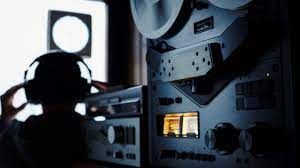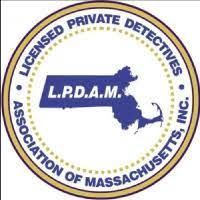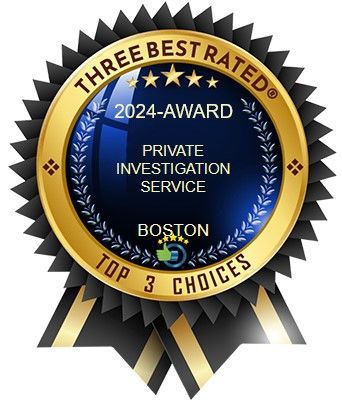
Massachusetts Private Detective Lic # LP0112I

Residential Debugging Inspection Program
Technical Surveillance Countermeasures Inspection Report
Date/Time/Location:
Report Prepared For:
Service Performed: TSCM Countermeasures Residence Debugging Program
Methodology:
Shield Investigations used a visual assessment of all enclosed areas of the home, technical sweep and scan of all interior areas of the home from basement, under porch storage area and garage to attic (mains ‘on’), technical sweep and scan of all interior areas of the home from basement, under porch and garage to attic (mains ‘off’) for the presence of covert and overt electronic eavesdropping and bugging devices
Equipment Used/Technical Data and Specifications:
Protect 1206i Bug and Digital Transmission Detector
The Protect 1206i uses a separate channel with a high, (2.4/5 GНz) frequency pre-selector to detect and locate Bluetooth and Wi-Fi with a much higher sensitivity. The unit also then processes the demodulated signal in order to identify which protocol has been detected. In addition the unit can detect all 'classical' bugs and inspect them for the presence of correlation by sending sound impulses as well as other digital transmissions at a standard distance (GSM, 3G, DECT, etc.) See Fig.1
RF detection Range (50 kHz - 12 GHz)
Extra high sensitivity to Bluetooth, Wi-Fi 2.4 GHz, Wi-Fi 5GHz and wireless video cameras
Frequency range:Micro-Pointer Antenna 2-12 GHz
Main antenna ANT1: 50-12000 MНz
Auxiliary antenna ANT2: 2.4 - 2.48 GНz, 4.9 - 5.875 GНz
T20 Portable RF Detector/Magnetic Field Probe/Camera Lens Finder
Frequency detection range: Up to 8 GHz
RF signals detector
Infrared scanner
Magnetic field detection
1.2G/2.4G/5.8G wireless cameras
stealth miniature cameras
wireless audio bugs
body wire wiretapping
phone taps
cellular audio/video bugging devices
** Most of the more commonly available bug transmitters from cameras to GPS trackers operate in the RF range of 1MHz-8GHz
Results were negative for the presence of electronic eavesdropping devices located within the physical presence of the home. In reaching out conclusion, Shield Investigations inspection relied in equal proportion on the extensive physical search of the home and contents and the the application of appropriate surveillance detection equipment.
The ‘bug sweep’ was conducted according to best practices and was performed in the same manner as we have done in past inspections in which concealed monitoring and recording devices have been discovered. The physical search was thorough and exhaustive and we are confident in our conclusion that the home is not being monitored by devices that operate within the parameters of the detection equipment employed for the job.
Main Power “on”
The sweep and scan operation was conducted in the following manner. The Shield Inspection team began with a physical and electronic sweep deep scan of the basement of the dwelling and all contents there-in, working in a counter clockwise direction beginning at the base of the stairs, to the under porch area, garage then around to the main service panel area. The search was performed with the main power on. Scanning equipment turned up no hits for concealed or non-concealed eavesdropping devices. The Team then proceeded to the top floor and beginning with the the attic area followed a clockwise sweep and scan from the bathroom, through both bedrooms, closets, the open area; scanning floors, walls and ceilings, lighting fixtures, boxes, furniture, electronics, drawers, mirrors, light fixtures, decorations, windows, window treatments, etc. The Shield Inspection Team continued with a deep scanning of the stairway walls and ceiling. The First Floor sweep and scan continued with the living room, office including electronics, TV, stereo components, remote controls, all battery and plug in devices, artwork, toys, rugs, chairs, other furniture, windows, light fixtures, floors, walls, ceilings and . The physical and electronic sweep was then performed of the adjacent dining room and adjoining room, bathroom including the walls, floors ceilings, windows and window treatments in the same manner as was conducted in the other rooms. The Team then scanned the kitchen and adjoining enclosed porch and again included cabinets, appliances, walls, floors ceilings, light fixtures, electronic devices, armoire, artwork, decorations, boxes and other spaces. The team then initiated conducted a perimeter inspection and electronic sweep and scan of the exterior of the home from foundation to and up 10 vertical meters of the siding.
Main Power “off”
The Shield Investigations conducted a repeat of the initial sweep and scan operation with the mains turned OFF.
The pictures that follow show the areas where the scan and sweep spent the most time checking during the TSCM procedure. There were some areas that required more focus and ‘deeper penetration’ due to the mass of the objects or piles, for example. The report concludes with the pictures which have been arranged in order they were cleared by the Shield Inspection team.
Cheating Partner Investigation
for Boston MA
Are You Being Cheated On? You Deserve to Know The Truth.
You’re here because you need the truth. Just the fear that someone may be cheating on you can be too stressful to deal with. Shield Investigations is here to try and at least help give you peace of mind; if someone is cheating on you, our goal is to get you proof. Our surveillance investigators are able to collect digital photo and video evidence for you while remaining undetected. Shield is led by investigators with years of experience conducting domestic and and cheating spouse investigations.
Your business with us is always private and confidential.
Some of the more common warning signs of possible infidelity are if the person you care about:
- Always locks their cell phone or won’t let you use it
- Leaves the room to talk on the phone
- Frequently deletes texts messages
- Starts spending less time at home
- Isn’t as interested in sex as before
- Is hard to reach by phone when not home
- Has receipts for things not mentioned to you before
- Names in the phone address book you don’t recognize
- Calls numbers that don’t have a name assigned to them
You Know the Signs, Contact Us so we can Help Find the Truth. We understand your problem, and want to help you. Please call us at (617)-798-2135 to schedule a free consultation, or fill out the easy
contact form. You may also email us
info@bostonprivatedetectives.com for more information.
Counter Surveillance and Bug Detection Services Boston, MA
Is someone keeping an unwanted eye on what you do? Ever have personal or business discussions that you need to keep private? Then you need to speak to the investigative experts at Shield Investigations. Shield Investigations is a firm run by investigator's with years of experience. We can offer you:
- Hidden Cameras
- Telephone debugging
- Bug & listening device sweeps
- Computer vulnerabilities & snooping
- Audio jamming & noise generators
- Phone wiretap detection
- GPS tracking device debugging
- Detection of surveillance or stalking
To schedule a free consultation please call us now at (617)-798-2135, or fill out the submit form on this page. You may also send us an email at info@bostonprivatedetectives.com for more info on our services.

Witness & Locating Services
in Massachusetts
Shield Investigations can help attorneys and others' locate important witnesses. Shield Investigations is a firm run by investigators with man years of experience. Please don't take our word for it.
“I am an attorney and have known and worked with Joe and Tanya for many years. He has handle multiple investigation projects for my office and his work product has been exemplary on each occasion. I have found him to be hard working, ethical, and his prices have always been more than fair. He responds quickly to most inquires, and has even completed many investigations the same day. I have used many investigators over the past 20 years, and Joe rates with the best.”
- Ken G.
For a free consultation please call (617)-798-2135 now or click here to fill out our online contact form. For more info, you may also email us at info@bostonprivatedetectives.com (Massachusetts License #LP0012H)
Asset Investigation Services for Businesses & Individuals
Shield Investigations offers investigative services related to assets, past judgments, liens, insurance claims, business backgrounds, filings, or other businesses that an individual may be associated with.
We can also search and investigate:
- Bank Accounts
- Brokerage Accounts
- Mutual Funds Accounts
- An Individual’s Employers
- Wage and Salary Information
- Property Owned
- Vehicles and Aircraft Owned
We can provide you with research for criminal and civil court cases. We can also keep the results of our investigation confidential, for companies that would prefer to handle potential fraud situations in-house.
For a free consultation please call (617)-798-2135 now or click here to fill out our online contact form. For more info, you may also email us at info@bostonprivatedetectives.com (Massachusetts License #LP0012I)



Dating Background Checks Boston, MA
Nearly one in three people who get married met their spouse through the internet. And in that way, online dating or meeting new friends from social networking sites can be good. But there are also potential dangers….many people that are on dating or other websites aren’t honest. Some pretend to be something or someone they’re not, use old or fake pictures of themselves, even hide the fact that they’re married. Others yet try to scam or even hurt others. How can you meet the right person, while avoiding the ones that may try to scam or harm you?
Our Background Check Services can:
- See if someone is actually married.
- Check a person’s public records.
- Uncover details of past arrests.
- Look into possible past drug abuse issues.
- Determine if someone is a sex offender.
- Find out if someone is using their real name.
- Get details on owned property or bankruptcies.
Shield Investigations offers dating background checks. We are staffed by professionals who draw on an array of public and private sector investigative, law enforcement and corporate experience. For a free consultation please call (617)-798-2135 now or click here to fill out our online contact form. For more info, you may also email us at info@bostonprivatedetectives.com (Massachusetts License #LP0012H)
Get a Free Consultation Today
Background Checks in Boston, MA
Shield Investigations can provide you or your business with background checks for new employees to look for possible criminal history, driving record, credit, education, employment and history of workers' compensation claims, among other areas examined. We can include Civil, Criminal, Family, Employment, Property, ID Verification...
- Civil Court Cases
- Criminal Cases
- Federal Cases
- Divorce and Marriage Records
- Driving History
- Prior Employment History
- Education History
- Sex Offenders Database
- Bankruptcy
- Verification of Age
- Credit History
Shield Investigations is staffed by professionals who draw on an array of public and private sector investigative, law enforcement and corporate sector experience. For a free consultation please call (617)-798-2135 or click here to fill out our online contact form. For more info, you may also email us at info@bostonprivatedetectives.com (Massachusetts License #LP0012H)
False Arrest in Boston, MA
Do you believe that you’ve been falsely arrested? Or has someone you know been falsely imprisoned? If so, Shield Investigations may be able to help a criminal attorney involved with your situation.
Our licensed and insured investigation firm can provide you or your attorney with a detailed overview of your case. We are able to review case files when possible, visit the arrest scene, locate and interview possible witnesses, take photos, and much more.
Shield Investigations (Massachusetts License #LP0012H) is committed to delivering you RESULTS that exceed your expectations on every job case and assignment. We are staffed by energetic professionals that combine many years of experience conducting investigations in both the public and private sector.
For a free consultation please call (617)-798-2135 or click here to fill out our online contact form. For more info, you may also email us at info@bostonprivatedetectives.com
Missing Persons
in Boston, MA
Trying to Find Somebody?
There are many reasons why a missing person search can be done. You may be looking for a relative, a loved one, or old friends. But there’s something very important that you need to know about missing person location services.
Not all businesses that offer to locate a missing person are the same. Some websites only offer a database of information related to a person. And many times, that information is outdated. But Shield Investigations is a licensed and insured investigative firm. So you won’t be buying outdated info from a website, but instead,
getting help from a real person, one with years of actual experience conducting missing persons investigations and locating missing people.
Schedule a Free Consultation Today
Don’t risk time and money by hiring an inexperienced investigator. Trust the firm led by an investigator with years of investigative training and experience. To schedule a free consultation please call us now at (617)-798-2135, or fill out the
submit form
on this page. You may also send us an email at info@bostonprivatedetectives.com for more info on our services.
Get a Free Consultation Today
CONTACT US
Thank you for contacting Shield Investigations.
One of us will get in touch with you as soon as we can.
Apologies, there was an error sending your message. Please call (617) 798-2135 or email us @ info@bostonprivatedetectives.com
Please try again later.
ABOUT US
Shield Investigations is a Boston area based licensed and insured private investigations company (MA License # LP-0112I). In operation since 1998, Shield Investigations is the embodiment of highly experienced professionals who draw on an extensive array of public and private sector investigative and security experience
SERVICES
CONTACT INFO
(617) 798-2135
info@bostonprivatedetectives.com
Shield Investigations - Boston
1 Washington Mall, Suite 1156
Boston, MA 02108
United States
Shield Investigations - Newton
275 Grove Street, Suite 2-400
Newton, MA 02466
United States
We service the following Massachusetts Cities and Towns: Cordaville, Dover, Duxbury, Wellesley, Deerfield, Winchester, Lexington, South Duxbury, Madaket, Needham, Sharon, Monomoscoy Island, Newton, Cochituate, Concord, Medfield, Lynnfield, Milton, Scituate, Hingham, Boxford, Longmeadow, Norton Center, Belmont, Pinehurst, Essex, Reading, Marshfield, Franklin, The Pinehills, Marblehead, Wilmington, Wilbraham, Swampscott, Hanson, Sturbridge, Burlington, Millis-Clicquot, Brookline, Northborough, Arlington, Forestdale, Scituate, East Sandwich, Littleton Common, Monument Beach, Braintree Town, North Falmouth, Watertown, Melrose, Nantucket, Ashburnham, Upton, Dedham, Wakefield, Siasconset, Hopedale, Pembroke, Newburyport, Raynham, Walpole, West Falmouth, Abington, Norwood, Maynard, Woburn, Medford, Westborough, Hull, Danvers, North Westport, Devens, Hopkinton, Kingston, East Pepperell, Amesbury, Stoneham, Saugus, Mattapoisett, Cambridge, Salisbury, Andover, Beverly, Granby, Bellingham, Mansfield, Rowley, Waltham, Somerset, Blandford, East Harwich, Marshfield, Rutland, Marlborough, Sagamore, Holland, Sandwich, Chestnut Hill, Gloucester, Beverly Farms, Salem, Boston, Charlestown, Manchester-By-The-Sea,



